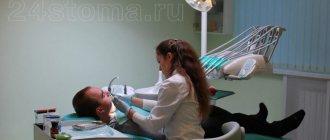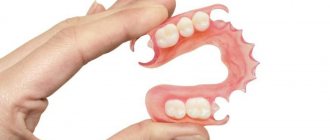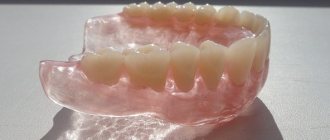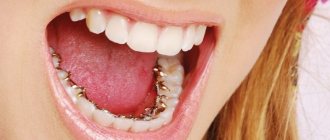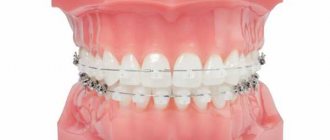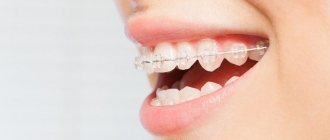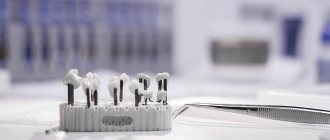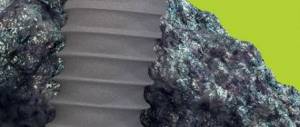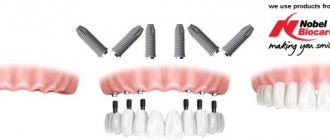Features of implants
Biohorizont implants are made of a special alloy, which is characterized by increased strength. The surface of the product is treated using calcium phosphate - this material is biologically compatible. As a result, it becomes rough, which contributes to the rapid engraftment of implants.
The thread design ensures uniform loading and helps avoid bone death. Spiral Lock microthreads are used in the area where the implant connects to the abutment. Thanks to it, the mobility of all components of the Biohorizon implants and the risk of germs and bacteria appearing are completely eliminated.
Preferred proprietary design features
In the manufacture of prostheses, Biohorizon used original technical innovations for the connecting parts of the structure:
- The company developed and patented its own thread design. Its shape made it possible to expand the implant surface by one and a half times, and made it possible to more evenly distribute the load on the bone tissue.
- For their products, manufacturers use titanium alloys rather than pure titanium, which significantly increases the strength characteristics of dental analogues.
- The outer layer is sprayed under pressure using sandblasting. Next, the surface is processed using the innovative laser technology Laser Lock, proposed by the company’s engineers. The outer coating obtained on the basis of calcium phosphate is biologically comfortable, has a rough texture, and takes root in the oral cavity much easier and faster (on average in 3-4 months).
- The developed Spiral Lock microthread reliably provides an implant-abutment connection, therefore, insuring the structure from loosening and microdamage during operation, as well as from the accumulation of harmful bacteria at the connection site.
- Thanks to its improved shape, the thread allows implantation on thin bone. This eliminates the need to increase the wall thickness.
The modern development has proven itself in practice and is offered to patients in many dental clinics around the world. Biohorizons orthodontic products allow us to cope with the problems of many patients, as they have an impressive range of sizes and model selection.
This variety allows you to:
- replace a lost tooth on the day of its removal;
- use implantation if there is a lack of bone tissue;
- prosthetics for entire areas of the dentition;
- restore long-removed teeth.
Our company also widely uses prosthetics with the installation of these implants, receiving positive ratings from satisfied patients.
Author:
Advantages and disadvantages
Biohorizont implants have several important advantages:
- strength,
- excellent survival rate,
- resistance to loads,
- reliable fastening,
- possibility of rapid implantation,
- the presence of special markings that protect against counterfeiting,
- maximum restoration of a lost tooth,
- durability of use,
- affordable price.
The kit includes an abutment, which significantly reduces the patient’s material costs. The only drawback of implants is that the golden abutment is visible through the cement of the crown.
Areas of application
The largest manufacturer Biohorizons specializes in the manufacture of various crowns and implants. You can view the full range on the official website in the Biohorizon product catalog. Absolutely everyone can gain not only a beautiful smile, but also restore their natural chewing function. With the help of implants from this American company, you can eliminate the most complex cases of abnormal tooth growth and correct existing malocclusions.
Those patients who first encountered such orthopedic devices are interested in where they are used. The manufacturers themselves claim that products from Biohorizont are indispensable in the field of dentistry and implantology, where existing dental problems need to be corrected without harming the tissues.
Biohorizont implants - types
The Biohorizont implant catalog comes in several varieties:
- Root-like.
- Laser-Lok 3.0.
- Single-stage implants.
- Internal.
- One-piece devices model 3.0.
Root-shaped implants
The implants are made in a root-like shape, which exactly replicates the anatomical one, and they are created using innovative Laser-Lok technology, which provides connective tissue attachment. Due to the reverse thread, the contact area between the implant and the bone is increased, thereby increasing its functionality. Biohorizont root-shaped implants are used in cases where immediate replacement of lost teeth is required.
Laser-Lok 3.0
An implant with a diameter of three millimeters, requiring a two-stage installation. Its main feature is the surface created using Laser-Lok technology. Thanks to it, soft tissues easily connect to the implant neck. In addition, it provides the necessary support. The model is suitable for areas with narrow space.
Single-stage implants
Biohorizont implants of this type combine the advantages of models used for two-stage implantation, but at the same time allow implantation to be performed in one stage. Installation is carried out using a surgical kit. It is intended for implantation of implants that require internal connection. In each case, you can choose your own device design.
Internal
The design of the implant has a square thread, which ensures a strong bond between the implant and the bone. The color-coded surgical kit eliminates the possibility of incorrect selection of required items. The parallel walls of the implants and the rounded apical part ensure quick installation of the system.
One-piece devices model 3.0
The model is used in cases where it is not possible to install two-stage implants. The one-piece model allows the surgeon to work with a device that has a minimum diameter and provides the required level of strength. For the manufacture of 3.0 implants, titanium alloy is used, which is highly durable.
Short description
The manufacturing company Biohorizons was founded back in 1994. During her successful work, she managed to establish herself exclusively on the positive side, thanks to which she gained great popularity in different parts of the world. Large-scale branches of this manufacturer are located in 60 major countries. The staff employs exclusively highly qualified doctors who are constantly working to further improve the products manufactured, making them more affordable, high quality and reliable.
The largest clinical trial facility is located at the National University of Alabama (Birmingham, UK). It is in this institution that most modern devices are manufactured, which carry out specific testing of designs for implantation with their subsequent improvement. Experienced engineers, together with other doctors, have developed a huge range of various dental devices that are successfully used in modern dental system and facial reconstructive surgery.
Since the company’s catalog is filled with all kinds of products, each patient can choose the most suitable option that will correspond to all anatomical features. On the official website biohorizons.com, Biohorizon implants are presented as universal orthopedic devices that help correct dentition even in the most critical situations.
A unique technique allows you to effectively combat anomalies of the dental system, thereby restoring chewing function. The average price of a Biohorizon implant in Russia ranges from 45 thousand to 46 thousand rubles. Here is the full price list.
Stages of the procedure
- Diagnostics. First of all, the doctor conducts an external examination and talks with the patient about how he sees the results of implantation. An x-ray of all teeth is prescribed to identify the area where the implant will be installed. At the same time, a photograph of the jaw is taken, and the necessary impressions are taken. After analyzing the information received, the specialist makes diagnostic models from plaster.
- Modeling. The dentist enters the available data obtained after diagnosis into a special computer program, studies them, creates a model of the jaws in three-dimensional format and draws up a plan for the operation.
- Surgical intervention: in the first stage, the damaged tooth is removed, after which a neat incision is made into which the implant is mounted.
- The further stage may vary and is determined depending on the method of restoration. Two-stage implantation: first, the base is implanted into the bone, and after three to four months an aesthetic crown is put on, or rapid implantation with further installation of prostheses.
Indications for use
In the practice of dentists, various situations have been recorded when implantation is the best and only way out for eliminating certain defects in the maxillofacial sector. This is especially true for those patients who have been diagnosed with partial or complete adentia. In addition, multifunctional Biohorizon implants allow a person to return a good bite and smile even when other methods of prosthetics are contraindicated.
The basic indications for installing such implants are related to the patient’s absence of a single tooth or an entire row. It is advisable to carry out such a procedure in the early stages, since the bone that will hold the artificial root may atrophy.
Implant engraftment
After the procedure, an important stage begins - osseointegration, that is, the engraftment of an implant embedded in the bone tissue. To make the process easy and high quality, unique Laser-Lok technology is used. The surface of the products is subjected to laser treatment, resulting in the formation of microtubules. Their size corresponds to one biological cell. Thanks to them, the surface becomes rough, which guarantees reliable adhesion to bone tissue. As a rule, the engraftment process takes three to four months.
Implantation Biohorizon from the point of view of technology
By the time the production of implants began (1997), pioneer companies (Straumann, Nobel Biocare, AstraTech) set the pace for the entire industry with their developments and technological solutions, so it was quite difficult for a young company to surprise experienced clinicians who were accustomed to working with the best manufacturers. Nevertheless, Biohorizon entered the dental implantation market with very reliable and interesting technologies.
First of all, it is worth noting the patented Laser-Lok surface. Today, the surface of most BioHorizons implants is treated with a biocompatible material based on calcium phosphate, and the neck of the implant is treated with a laser (in fact, this is why this technology got its name). As a result, special microtubules with a width of 8 and 12 microns are formed on the surface of the implant, which contribute to high-quality engraftment of the implant and primary stability. As proof of the effectiveness of its development, the manufacturer cites the results of dozens of studies confirming minimal loss of bone tissue in the alveolar ridge area and good long-term treatment results.
Biohorizon implants also have an individual thread design with an increased surface area, which allows you to optimally distribute loads on different areas of bone tissue and install implants in conditions of limited volume and density.
Reviews
Biohorizont implants appeared on the market not so long ago, but quickly became popular among dentists.
Patients leave both positive and negative reviews:
- “One of the most affordable implants in terms of price. It was installed seven months ago and I don’t feel any discomfort.” Irina.
- “We installed Biohorizont, I’m very pleased. Good value for money. I got used to the implants quickly, no pain. The implants were placed in two stages.” Natalia.
- “Biohorizon” is the best option, there are no complaints, they took root without any problems.” Galina.
- “We installed nine implants on both jaws. At first everything was fine, but then the implant came out of the gum by two millimeters. I’m worried that I’ll have to go to the dentist.” Svetlana.
- “Mom became allergic to Biohorizon and had to be removed. The annotation states that the material is hypoallergenic. Mom probably has an individual intolerance.” Lydia.
The manufacturer BioHorizons is considered a reliable partner, producing high-quality products that match their price. Implants do not disappoint either the dentists who work with them or the consumers who choose to use them.
Osstem: an honest review of the TS-3 series implants
Doctor on duty for the section
|
08/05/2019
|
Reviews and tests
Osstem implants have been manufactured in South Korea since 1997. Until recently, they were sold mainly only in the countries of the Pacific region. In some countries, the same implants are sold under the Hiossen brand (at a higher price), which is the company’s marketing strategy.
There is a lot written in advertising brochures about the fact that these implants are the most affordable of the premium segment implants, only at a more affordable price. It is extremely difficult to find reviews on Osstem implants - due to their not very wide distribution both in our country and in Europe. This article will show you how objective advertising claims are.
Osstem implants: types and characteristics
Osstem implants come in 2 types: MS series and TS-3 series. The latter is a classic universal implant (for any type of bone), with three surface options. According to the manufacturer’s recommendation, they can only be used for the classical two-stage implantation technique, and (depending on the conditions) the start of prosthetics can be carried out in a period from 6-8 weeks to 3-6 months.
Therefore, if you need implants for immediate implantation (when prosthetics are performed immediately after surgery), Osstem TS-3 implants are definitely not suitable for you. The MS series, in turn, is designed for use only in narrow spaces, for example, with a narrow alveolar ridge.
Let us tell you more about the TS-3 series implants
TS-3 series implants are the company's main product. According to the manufacturer: they have high self-tapping ability and very good primary stability. Undoubtedly, these characteristics are very important.
Analysis of implant characteristics
There is absolutely nothing premium in this implant, that is, it is the most common implant with the characteristics of economy segment implants. This is also evidenced by its low purchase price for dental clinics. But how does it differ from its analogues?
Unique carving
The aggressive thread of the implant with a high ability to self-tapping threads in the bone bed of the implant allows the implantologist to slightly change its direction while screwing in the implant - this is often necessary. However, this also has disadvantages: it is very difficult to control the correct direction of screwing in the implant, which spontaneously tends towards lower bone density.
As a result, the implant will not be in the position that was intended. An attempt to unscrew and re-twist an implant with an aggressive thread always leads to the same result - the implant will not receive any primary stability, but will simply dangle in the bone bed.
In addition, aggressive threading occurs throughout the entire length of the implant. Its presence in the upper third of the implant will definitely lead to atrophy of the bone tissue around the neck of the implant - with a subsequent deterioration in aesthetics (the appearance of cyanosis of the gums and gum recession). That is why most manufacturers use microthreads in the neck area of implants, which do not transfer a large load to the marginal bone and therefore do not lead to significant bone atrophy.
High primary stability
The implant has a conical shape and a pronounced thread, which really gives it good primary stability. Primary stability refers to how reliably (firmly) the implant holds in the bone after screwing. However, despite this, the manufacturer does not recommend using these implants for immediate loading. Prosthetics on these implants is possible no earlier than after a period of 6-8 weeks to 3-6 months.
Three types of Osstem implant surfaces
In the company’s catalog, the TS-3 series of implants is presented in three options: implants can be supplied with “SA”, “CA” and “HA” surfaces. It should be noted that Osstem specifically named their surfaces differently from common international names to make their products look more unique. However, their “SA” surface is nothing more than the “SLA” surface; in other implants, the surface of the implant is not completely unique, since almost 95% of all implants in the world have just such a surface. In this case, SA surface means that the titanium surface has been sandblasted followed by acid etching.
In addition, the Osstem company is a little incorrect. In advertising materials, they use clinical studies in which they compare their SA implant surface - not with similar SLA surfaces of implants from other manufacturers, but with an obsolete surface such as RBM.
They say that cellular regeneration and engraftment of implants with an SA surface are 20% better than that of implants with an RBM surface. The difference between SA/SLA and RBM is that the first surface is produced by a combination of sandblasting and acid etching, while RBM is produced by sandblasting alone.
The "CA" surface of the implant is according to the company's statements, i.e. this surface will have increased wettability with blood, which also promotes accelerated deposition of fibrin threads between the surface of the implant and the bone, which somewhat stimulates osteogenesis.
It's a really nice surface, but it's not unique. All top manufacturers have long been using technologies to create implants with a negatively charged ultra-hydrophilic surface. This surface reduces the risk of poor implant survival in smokers.
The “HA” surface of implants is a very thin layer (less than 10 nm) of resorbable hydroxyapatite material that is applied to the SA surface of the implant. According to the company, this helps improve the primary stabilization of the implant in the bone bed immediately after surgery. However, materials from the company itself indicate that there are still more problems with this surface (the top layer may peel off, which, on the contrary, leads to a slowdown in primary osteogenesis).
Conclusions: it would seem that implants of this type should be recommended in the area of the anterior teeth, because The neck of the implant is completely immersed in the bone - should allow one to achieve good aesthetics in the area of the transition of the gum to the crown on the implant. And this is the most important and difficult task in implantology. However, aggressive carving in the area of the implant neck will contribute to bone atrophy - with the subsequent appearance of gum recession and cyanosis.
In addition, in our opinion, it is not worth using implants with such threads in denser bone types D1 and D2, because Aggressive carving promotes dense bone resorption. For dense bone types, cylindrical implants with a less aggressive type of thread are more suitable, for example, implants from AstraTech or Straumann.
So: Osstem TS-3 implants are inexpensive and of fairly high quality . With the correct choice of installation location and the doctor’s steady hand, they will serve for a very long time. Recommended for smokers to reduce poor survival rates.
Based on materials from the article by Kamenskikh K.V. — implant surgeon, 19 years of experience
Tags:
dentistry
|
drug review
Previous post
Next post
Evgeniy, Ekaterinburg
|
24.09.2019
In any case, Osstem implants are among the most inexpensive in Yekaterinburg
Administrator
|
24.09.2019
Evgeniy, we completely agree with you: one of the best ratios of price and quality
Olga, Ekaterinburg
|
01.10.2019
Almost convinced! Mom needs to get implants. How to sign up for a consultation?
Administrator
|
01.10.2019
Olga, you can sign up through the form on our website or by calling
Write a comment
Recovery process
Chewing function is not restored immediately after installation of implants. For some time, the dentist monitors the process of implantation of the foreign body and observes the gum tissue.
Although implantation is easier to tolerate than other types of surgical intervention, it must be remembered that injury to hard and soft tissues can lead to complications.
The oral cavity becomes vulnerable to the development of infections. To avoid this, you must follow all doctor's instructions. Recovery processes are completed by 3-4 months after implantation.
Installation
Biohorizon implants are installed in patients in several stages:
- Diagnostics. After a visual examination, the dentist will refer you for x-rays, digital imaging of the jaw and taking an impression. Also at this stage of working with the doctor, you can discuss your expectations and real future results.
- Simulation . An implantation plan is being developed. Using a computer program, a model of the jaw is created in three dimensions. Based on the shape of the previously taken impression, the specialist makes a crown for the implant.
- Surgical actions . At this stage, if necessary, treatment or removal of the affected teeth is carried out. Painkillers are administered, and a bed for implant placement is prepared using calibration cutters. The doctor installs a titanium alloy structure and an abutment on top of it. Following this, after 3-5 days, the crown of the artificial tooth is attached.
In the video, watch the process of restoring teeth with Biohorizon implants.
Dental contraindications
Like any other surgical intervention, prosthetics with Biohorizon devices has its limitations. If the patient decides to neglect even just one point, then this approach to treatment can negatively affect not only the state of health, but also the quality of life. Dentists say that the main contraindications include the following diseases:
- Oncological neoplasms.
- Impaired blood clotting.
- Neurological and mental disorders.
- Pathologies of the cardiovascular system.
- Tuberculosis and any other complications associated with it.
- Reduced immunity.
- Osteoporosis.
- Tissue damage due to the negative effects of certain pathologies, poor wound healing.
- Acute liver or kidney failure.
- Serious damage to the mucous membranes.
- Chronic increase in blood pressure (hypertension).
It is worth considering that there are some temporary conditions of the body in which dental prosthetics are strictly prohibited. In such a situation, the patient must undergo comprehensive drug treatment that will prevent a possible relapse. After treatment, implantation can begin.
Surgical intervention is strictly prohibited in the following cases:
- Inflammation of the gums.
- Anomalies of the alveolar process.
- Damage to teeth by caries.
- Addictions (drug, alcohol, nicotine).
- Abnormal bite disorder.
- Periodontitis.
- Inflammation of the jaw joint.
- Childbearing and lactation.
A qualified doctor must examine his patient to exclude all of the above contraindications. Before implantation, all diseases must be eliminated, since only then the effect of treatment will be maximum.
